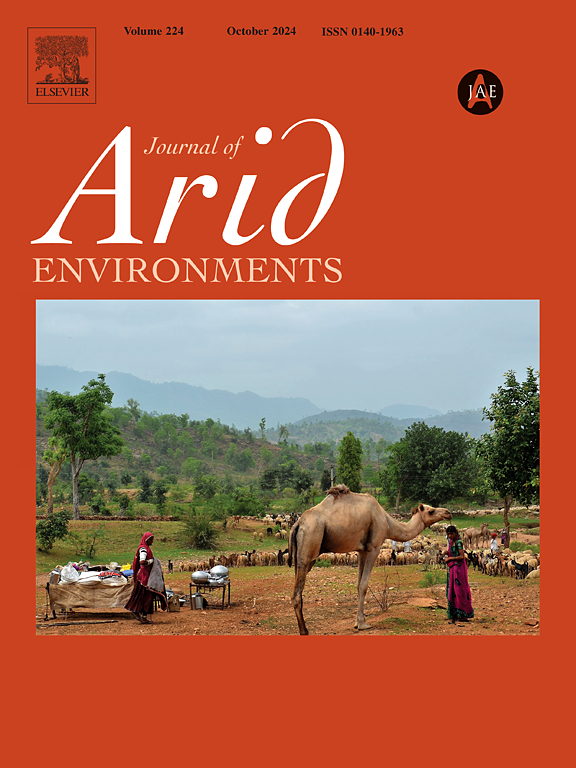Impact of drought-induced herbivory by Cape porcupine on Aloe claviflora on the Wolwekraal Nature Reserve, Prince Albert
IF 2.6
3区 环境科学与生态学
Q2 ECOLOGY
引用次数: 0
Abstract
Aloe claviflora, widely distributed across the arid regions of southern Africa, remains understudied. In 2016, a population on the Wolwekraal Nature Reserve (113 ha) in the Western Cape, Succulent Karoo Biome, was surveyed to examine size class distribution and floral visitors. The genet population (205) had an inverse-J shape distribution with most genets occurring in the small size class (<0.5–1 m) and fewer occurring in the large size classes. The ramet population (1354), exhibited a typical bell-shaped distribution, with 77% of ramets in 2016 occurring in the reproductive size class. In 2016 and 2021, 33% and 29% of the population produced flowers, respectively, which were visited by birds, reptiles, honeybees, solitary bees, and small mammals. Persistent drought (2015–2021) halted flowering in 2019 and 2020. Browsing by Cape Porcupine was first observed in 2018. Therefore, subsequent surveys conducted in 2019 and 2021 assessed the extent of damage. Since 2016, 62.9% of genets and 39.7% of ramets were destroyed. The data suggest that the animals frequently browsed on reproductive ramets. This study highlights the impact of drought-induced porcupine browsing on A. claviflora survival, underscoring significant changes in porcupine behavior and the resulting population decline of this long-lived, arid-adapted species.
豪猪干旱取食对阿尔伯特亲王Wolwekraal自然保护区芦荟植物的影响
广泛分布在非洲南部干旱地区的芦荟仍未得到充分研究。2016年,对西开普省多肉卡鲁生物群Wolwekraal自然保护区(113公顷)的一个种群进行了调查,以检查大小类分布和花卉游客。基因群体(205个)呈倒j型分布,大部分基因出现在小体型(0.5-1 m),大体型较少。分株种群(1354个)呈典型的钟形分布,77%的分株发生在生殖大小类。2016年和2021年,分别有33%和29%的种群开花,鸟类、爬行动物、蜜蜂、独居蜜蜂和小型哺乳动物也会光顾。持续的干旱(2015-2021年)在2019年和2020年停止了开花。2018年首次观察到豪猪角的浏览情况。因此,随后在2019年和2021年进行的调查评估了损害程度。2016年以来,共有62.9%的基因和39.7%的品种被销毁。数据表明,这些动物经常浏览生殖框架。这项研究强调了干旱诱导的豪猪觅食对A. claviflora生存的影响,强调了豪猪行为的显著变化以及由此导致的这种长寿、适应干旱的物种的数量下降。
本文章由计算机程序翻译,如有差异,请以英文原文为准。
求助全文
约1分钟内获得全文
求助全文
来源期刊

Journal of Arid Environments
环境科学-环境科学
CiteScore
5.70
自引率
3.70%
发文量
144
审稿时长
55 days
期刊介绍:
The Journal of Arid Environments is an international journal publishing original scientific and technical research articles on physical, biological and cultural aspects of arid, semi-arid, and desert environments. As a forum of multi-disciplinary and interdisciplinary dialogue it addresses research on all aspects of arid environments and their past, present and future use.
 求助内容:
求助内容: 应助结果提醒方式:
应助结果提醒方式:


